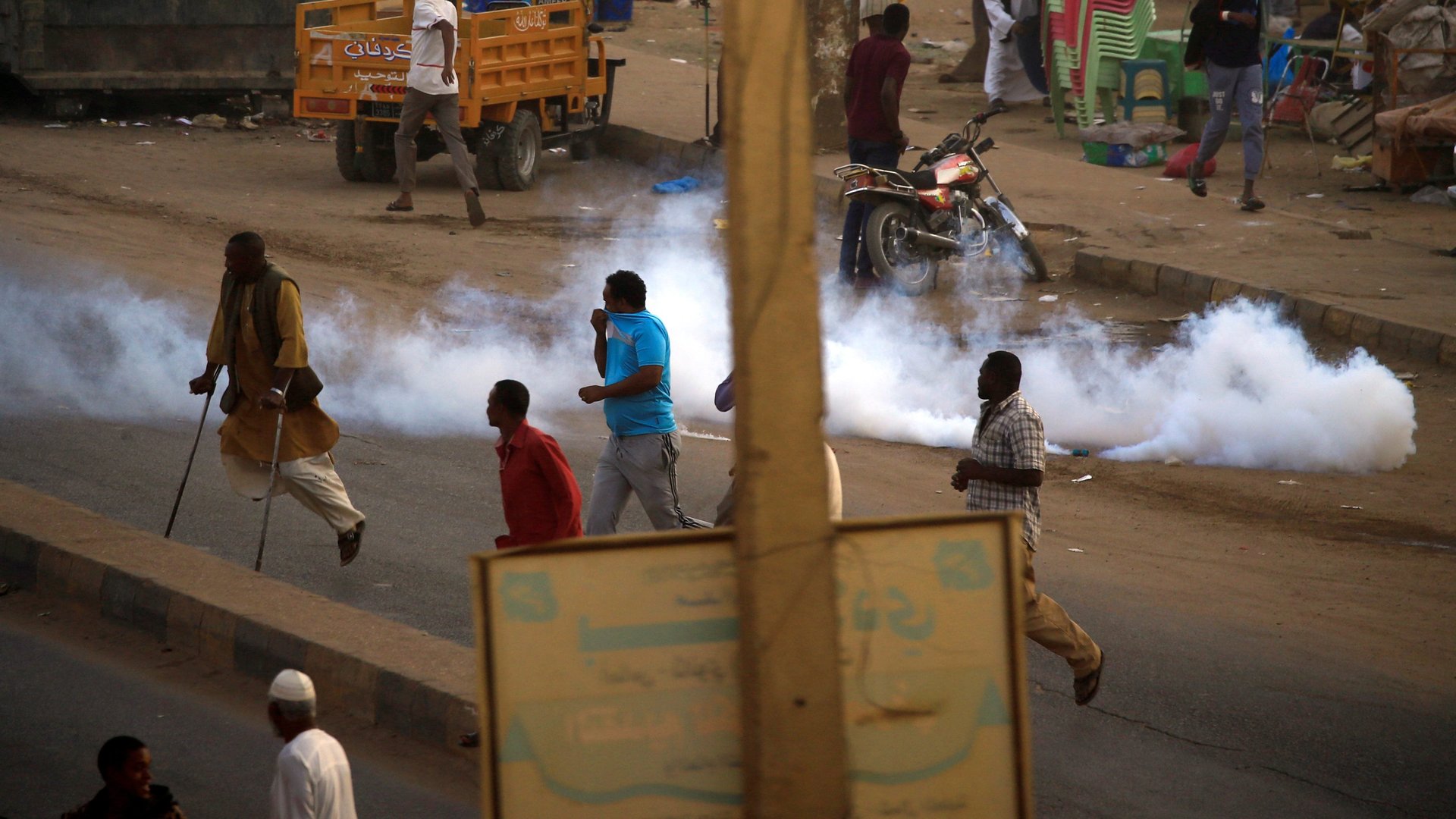Sudan’s uprising protesters have been the victims of tear gas abuse
Following the toppling of Sudanese president Omar al-Bashir on Apr. 11, health professionals and researchers have been reassessing the number of deaths, injured and detained during the period of protests that started last December. A study published this month in Conflict and Health puts the number of casualties at 117, a higher count than the Sudanese government’s claim of 29 deaths or initial reports of 60 deaths by activist groups.


Following the toppling of Sudanese president Omar al-Bashir on Apr. 11, health professionals and researchers have been reassessing the number of deaths, injured and detained during the period of protests that started last December. A study published this month in Conflict and Health puts the number of casualties at 117, a higher count than the Sudanese government’s claim of 29 deaths or initial reports of 60 deaths by activist groups.
“We wanted to produce a credible mortality estimate for documentation purposes and one that can possibly be used for prosecutions in the future,” said Nada Abdelmagid, a co-author of the report.
Widespread anti-government protests in Sudan first started against high bread prices then turned into calls to end Bashir’s 30-year reign. At the height of the protests, government security forces responded with violence using batons, tear gas, rubber bullets and live ammunition. While most “decedents and injury victims were shot,” according to Conflict and Health, some were victims of tear gas like Samih Elsayed.
In January, Elsayed, 29, went to offer his condolences along with hundreds to the family of a protester who was killed the day before in Khartoum during a sit-in. Security forces came to disperse the crowd in the street and fired tear gas. A canister hit the ground, ricocheted and hit Elsayed’s right eye which began to bleed. Those around rushed him to a nearby hospital where dozens were also being treated for injuries sustained that day and during weeks of protests.
“It was just horrible, horrible, it can be as harmful as bullets” he said on a phone from a hospital bed in Moscow, Russia. He traveled to Moscow for further treatment and his injured eye was enucleated there.
Sudanese security forces at times fired tear gas canisters into homes, buses, universities and hospitals. While using tear gas for “riot control” is legal according to international law—except if used during warfare—how it is used is relevant.
“Deploying it in a way that causes harm…[may be] contrary to UN guidelines on use of force …the circumstances make all the difference in figuring this out,” explained Jehanne Henry of Human Rights Watch.
Accurately documenting the number of victims of tear gas has been difficult. Doctors such as Yasar Hammor of the Sudanese Doctors’ Syndicate say that their assessments have largely been based on numbers they have been able to confirm in the capital Khartoum and mostly from three major hospitals, given the tight control security forces exerted over the release of related information along with fears of government phone tapping. His group currently estimates that 99 persons were severely injured because of tear gas, and that number might change.
“The number is certainly larger, likely double,” Hammor said.
They include some who suffered fractured bones, skulls, lost eyes or skin burns resulting in amputation because of direct hits by canisters. At least nine deaths, on the other hand, have been confirmed because of tear gas including that of Hashim Hadra, an 80-year old civil society activist who suffered respiratory complications when tear gas was thrown in his house as protesters ran in to hide from security,according to Sara Abdeljalil of the Central Doctors’ Committee, another independent medical union.
“They use it in a chaotic way,” she said, referring to security forces.
Sudanese protesters, activists and artists responded in different ways to the government’s use of tear gas.
Numerous cell-phone videos have shown some protesters throwing back canisters or containing them with buckets, earning them the titles of sa’id al-bomban (tear gas hunter) or jardal man (“jardal,” Sudanese Arabic for “bucket”), such as a video of Rifka, a young woman seen throwing back tear gas canisters at security forces. Sudanese-Canadian singer Waleed Abdulhamid dedicated a song to sa’id al-bomban, while Asim Jubara, a caricaturist, made a cartoon honoring jardal man based on advertisements for the popular basketball sneaker Air Jordan.
Groups in the diaspora, such as the University of Khartoum Alumni Association in America, have collected funds to help some of the injured get treatment. Another network of Sudanese activists has been trying to stop international companies from selling tear gas to the Sudanese government, in an effort to emulate similar campaigns made against the governments of Bahrain and Venezuela.
U.S.-based Mohammed Hashim Kambal, a representative of the group, along with others, has worked with volunteers on the ground in Sudan, who have sent photos of used canisters during protests. The activists conduct their research and through online petitions and call-ins, target the country embassies of manufacturing companies in Khartoum.
Thus far, collected canisters have shown products made by the Korean Defense Industry Co. of South Korea and the Chinese company NORINCO, along with possible other countries. The South Korean embassy responded on its Facebook page describing the matter as a “mistake” and said it would look into the matter. Kambal and his colleagues are determined to succeed.
“We are targeting all the companies, one canister at a time,” he said.
Sign up to the Quartz Africa Weekly Brief here for news and analysis on African business, tech and innovation in your inbox